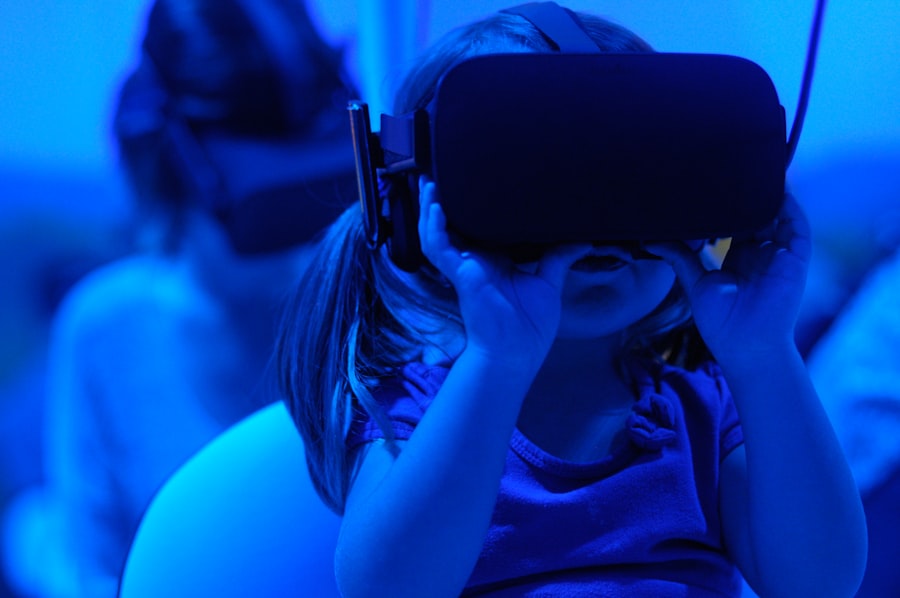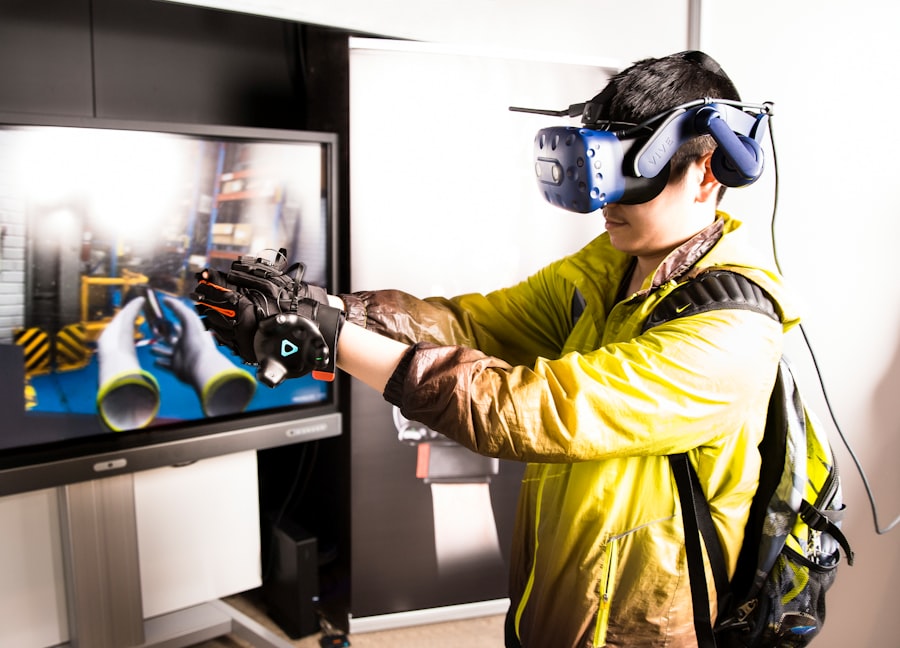Download links
How to install Exploring the Virtual Life: How Technology is Changing the Way We Live APK?
1. Tap the downloaded Exploring the Virtual Life: How Technology is Changing the Way We Live APK file.
2. Touch install.
3. Follow the steps on the screen.
Description
The advent of virtual reality (VR) has marked a significant turning point in the way we interact with technology and perceive our surroundings. Initially, VR was confined to the realms of gaming and entertainment, but its applications have rapidly expanded into various sectors, including education, healthcare, and real estate. Companies like Oculus, HTC, and Sony have pioneered VR headsets that offer immersive experiences, allowing users to step into entirely new worlds.
For instance, Oculus Quest 2 has gained popularity for its wireless capabilities and user-friendly interface, making it accessible to a broader audience. This technology creates a sense of presence that traditional media cannot replicate, enabling users to engage with digital environments in a profoundly personal way. Moreover, the development of VR technology has been fueled by advancements in graphics processing and motion tracking.
High-resolution displays and sophisticated sensors allow for realistic simulations that can mimic real-life scenarios. In the medical field, VR is being utilized for surgical training, where aspiring surgeons can practice procedures in a risk-free environment. A notable example is the use of VR by institutions like Johns Hopkins University, which employs this technology to train medical students in complex surgical techniques.
As VR continues to evolve, it is poised to redefine not only entertainment but also how we learn, work, and interact with one another.
Key Takeaways
- Virtual reality technology is creating new immersive worlds and experiences for users.
- Social media and virtual relationships are impacting human connection by providing new ways to interact and communicate.
- Remote work is reshaping traditional office spaces, allowing for more flexibility and accessibility for employees.
- Technology is shaping leisure activities through gaming and entertainment, providing new forms of entertainment and interaction.
- Virtual learning is evolving in the digital age, offering new opportunities for education and skill development.
Social Media and Virtual Relationships: The Impact of Technology on Human Connection
The rise of social media platforms has transformed the landscape of human relationships, creating a new paradigm for how we connect with others. Platforms such as Facebook, Instagram, and Twitter have enabled individuals to maintain relationships across vast distances, fostering connections that might not have been possible otherwise. For instance, families separated by geography can share moments through photos and videos in real-time, bridging the gap created by physical distance.
However, this shift has also led to a redefinition of intimacy and social interaction, as many relationships now exist primarily in the digital realm. While social media facilitates communication, it also raises questions about the quality of these interactions. The phenomenon of “social media fatigue” has emerged as users grapple with the pressure to curate their online personas while managing the constant influx of information.
Studies have shown that excessive use of social media can lead to feelings of isolation and anxiety, as individuals may compare their lives to the seemingly perfect portrayals of others. This paradox highlights the complexity of virtual relationships; while technology can enhance connectivity, it can also create barriers to genuine human interaction. As we navigate this digital landscape, it becomes essential to find a balance between online engagement and face-to-face connections.
Virtual Workspaces: How Remote Work is Reshaping the Traditional Office

The COVID-19 pandemic accelerated the shift towards remote work, prompting organizations to adopt virtual workspaces at an unprecedented rate. Tools like Zoom, Microsoft Teams, and Slack have become integral to daily operations, allowing teams to collaborate effectively regardless of their physical locations. This transition has not only changed where work is done but also how it is perceived.
The traditional office environment, once seen as the cornerstone of productivity, is now being reevaluated as companies recognize the benefits of flexibility and autonomy that remote work offers. In this new landscape, virtual workspaces are designed to foster collaboration and creativity while accommodating diverse working styles. For example, companies are increasingly utilizing project management software like Asana or Trello to streamline workflows and enhance communication among team members.
Additionally, virtual reality platforms are emerging as innovative solutions for remote collaboration, enabling teams to meet in immersive environments that simulate physical presence. This evolution signifies a departure from conventional office dynamics and suggests a future where work is more adaptable and inclusive.
The Influence of Gaming and Entertainment: How Technology is Shaping Leisure Activities
| Leisure Activity | Percentage of People Engaged |
|---|---|
| Playing Video Games | 65% |
| Watching Movies/TV Shows | 75% |
| Listening to Music | 80% |
| Reading Books | 50% |
| Attending Live Events (Concerts, Sports) | 40% |
The gaming industry has undergone a remarkable transformation over the past few decades, evolving from simple pixelated graphics to highly sophisticated virtual experiences that captivate millions worldwide. With advancements in technology, gaming has transcended mere entertainment; it has become a cultural phenomenon that influences social interactions and leisure activities. Titles like “Fortnite” and “Call of Duty” not only provide immersive gameplay but also serve as platforms for socialization among players who connect through shared experiences.
Moreover, the rise of streaming services such as Twitch has revolutionized how gaming content is consumed. Gamers can now broadcast their gameplay live, allowing viewers to engage in real-time discussions and form communities around shared interests. This shift has blurred the lines between player and spectator, creating a new form of entertainment that emphasizes interaction and engagement.
As technology continues to advance, we can expect further innovations in gaming that will redefine leisure activities and foster new forms of social connection.
Virtual Learning: The Evolution of Education in the Digital Age
The landscape of education has been irrevocably altered by the integration of technology into learning environments. Virtual learning platforms have emerged as essential tools for educators and students alike, providing access to resources and opportunities that were previously unavailable. Online courses offered by institutions like Coursera and edX allow learners from diverse backgrounds to pursue knowledge at their own pace, breaking down geographical barriers that once limited educational access.
In addition to traditional academic subjects, virtual learning has expanded into areas such as coding boot camps and vocational training programs. These initiatives cater to the growing demand for skills in an increasingly digital economy. For instance, platforms like Khan Academy offer free resources that empower learners to take charge of their education while fostering a sense of community through discussion forums and peer interactions.
As we continue to embrace technology in education, it is crucial to consider how these advancements can be leveraged to create inclusive learning environments that cater to diverse needs.
The Future of Virtual Living: Exploring the Potential of Technology in Everyday Life

As technology continues to evolve at a rapid pace, the concept of virtual living is becoming increasingly tangible. Smart home devices are transforming our living spaces into interconnected ecosystems that enhance convenience and efficiency. From smart thermostats that learn our preferences to voice-activated assistants like Amazon’s Alexa or Google Home that manage daily tasks, these innovations are reshaping how we interact with our environments.
Furthermore, augmented reality (AR) is poised to play a significant role in our everyday lives by overlaying digital information onto the physical world. Applications such as IKEA Place allow users to visualize furniture in their homes before making a purchase decision, enhancing the shopping experience through immersive technology. As we look ahead, the potential for virtual living extends beyond mere convenience; it encompasses a vision where technology seamlessly integrates into our daily routines, enhancing our quality of life while fostering deeper connections with our surroundings.
In conclusion, the rise of virtual reality, social media dynamics, remote work transformations, gaming influences, virtual learning advancements, and the future of virtual living collectively illustrate how technology is reshaping our world. Each facet presents unique opportunities and challenges that require thoughtful consideration as we navigate this rapidly changing landscape. Embracing these changes while remaining mindful of their implications will be crucial as we move forward into an increasingly digital future.
If you’re interested in exploring more virtual experiences, you should check out the article on the most highly rated apps on TG777. These apps offer a variety of virtual activities and games that can transport you to different worlds and provide hours of entertainment. One app that stands out is TG777 Chess 7, a card chess game that offers a unique twist on the classic game of chess. With stunning graphics and challenging gameplay, this app is sure to keep you engaged for hours on end. Check out the article here for more information on this exciting virtual game and other top-rated apps.
FAQs
What is virtual life?
Virtual life refers to the experience of living and interacting in a digital or virtual environment, often through the use of technology such as virtual reality, augmented reality, or online platforms.
What are some examples of virtual life?
Examples of virtual life include virtual reality games and simulations, social media platforms, online communities, and virtual worlds such as Second Life and The Sims.
How does virtual life differ from real life?
Virtual life differs from real life in that it takes place in a digital or simulated environment, and the interactions and experiences are mediated by technology. While virtual life can offer a sense of escapism and creativity, it may not always accurately reflect the complexities and nuances of real life.
What are the benefits of virtual life?
Some potential benefits of virtual life include opportunities for creativity and self-expression, the ability to connect with others from around the world, and the potential for immersive and engaging experiences.
What are the potential drawbacks of virtual life?
Drawbacks of virtual life may include issues related to privacy and security, the potential for addiction or over-reliance on technology, and the risk of disconnecting from real-life relationships and experiences.
How is virtual life impacting society?
Virtual life is impacting society in various ways, including influencing how people socialize, work, and entertain themselves. It has also raised questions about the boundaries between the digital and physical worlds, and the implications for mental health and well-being.





